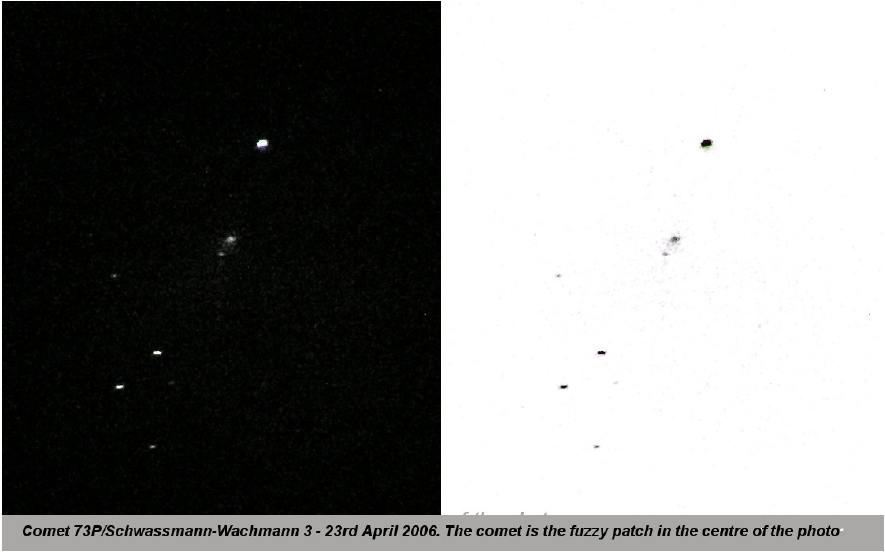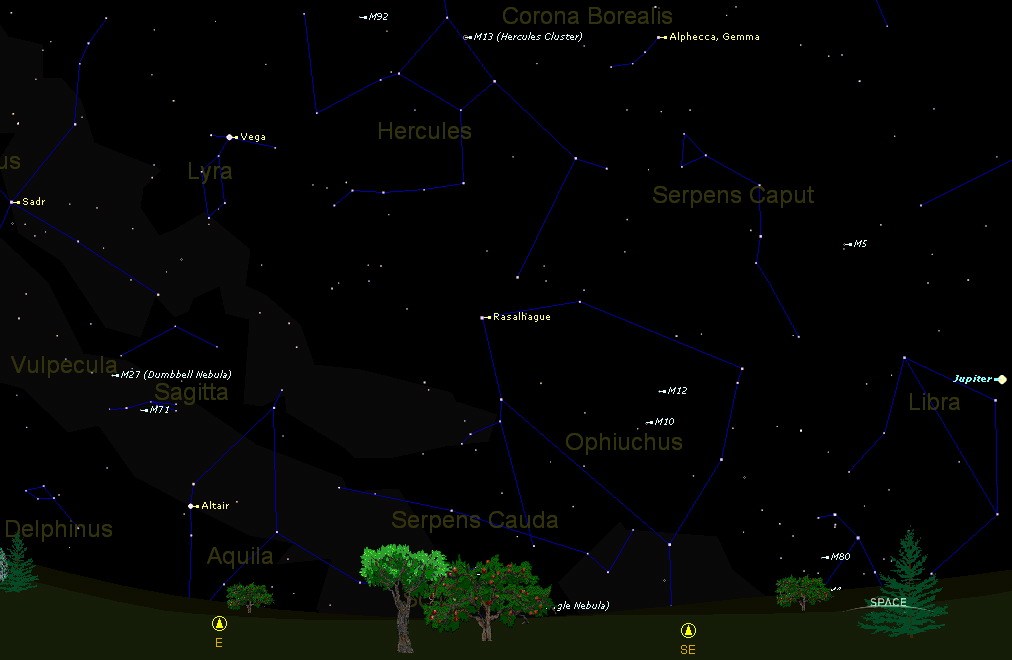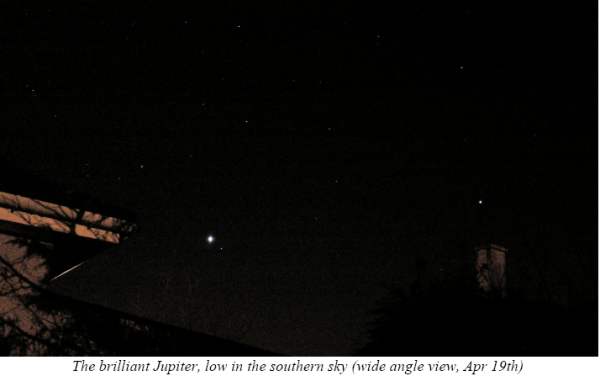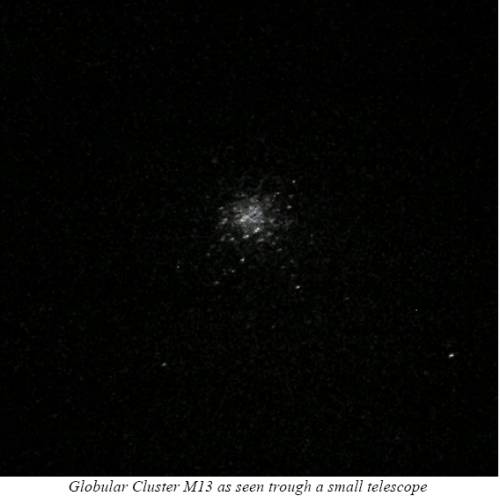 | Caithness.Org | Community | Business | Entertainment | Caithness... | Tourist Info | Site Map |
• Advertising • Chat Room • Contact Us • Kids Links • Links • Messageboard • News - Local & Scottish • News - UK & News Links • About / Contact Us • Submissions |
• Bookshop • Business Index & News • Jobs • Property For Sale • Property For Rent • Shop • Sutherland Business Index |
• Fishing • Fun Stuff • George, The Saga • Horses • Local Galas • Music • Pub Guide • Sport Index • What's On In Caithness |
• General Information • B & Bs • Backpackers • Caravan & Camping • Ferries • Getting Here • Holiday Letting • Hotels • Orkney • Pentland Firth • Sutherland • Taxis |
| N E W S F E E D S >>> |
Caithness Night Sky
Comet Update - Comet 73P/Schwassmann-Wachmann
3 - May 2006
Gordon Mackie
|
The month of May 2006 will provide an opportunity for
some interesting objects to be observed in the night sky with no more than
a pair of binoculars, with some even being visible to the naked eye.
Unfortunately true darkness does not fall until around midnight, but if
you're up late at night or very early in the morning why not take a look
at what's up there. Comet 73P/Schwassmann-Wachmann
3 On the 23rd of April I got a good view of fragment C through my small telescope. Although not quite as clear a view as the photo above, I was quite impressed given the telescope I was using was just a fraction of the size of the Faukes Telescope. I obtained the photo below of the comet, unfortunately it did not come out as clearly as I saw it. On the right hand side is the negative of the image, which perhaps shows the �fuzziness� a little clearer. |

| I have to say though that on the 23rd
April I could only just pick it out the comet with my 12x50 binoculars and
that was largely because I knew exactly where to look. Fear not however,
as during the next 3 weeks the comet will brighten dramatically (becoming
almost 100 times brighter than it is now) as it races past us. Fragment C
should be able to be seen by the naked eye under clear dark skies
(remember to give your eyes at least 5-10 minutes to become �dark
adapted�), and Fragment B may just about be visible nearby to the naked
eye also. Both should be hard to miss using most binoculars by the end of
the first week in May. Visit http://www.skyhound.com/sh/73P.html for details of the Comet 73P/Schwassmann-Wachmann updated on a daily basis. Links at the bottom of that webpage page show you where to find it in the sky each night (note that once close to the Earth, comets change position significantly each night relative to the background stars). The comet fragments will be seen in the eastern sky after dark. As mentioned in the latest newsletter the comet will start May in the constellation of Hercules and as the month passes will move through Lyra, Vulpecula, Pegasus and Pisces. As a result of this motion it will rise later each night meaning that by its brightest in mid May, it will be best placed in the sky for observation from midnight onwards until a few hours before sunrise. Due to the rapidly shortening Caithness nights and the presence of a full moon in mid May the best chance to see it in it's glory may turn out to be the beginning of May. |

| Regular updates on the comet can also
be found at: http://skyandtelescope.com/ observing/objects/comets/article_1704_1.asp & http://www.spaceweather.com/ which provides regular updates on Comet 73P/Schwassmann-Wachmann amongst other daily info on solar and auroral activity. Whilst out searching for the comet why not check out the following object which are clearly visible in binoculars: Jupiter & it's
Moons
Jupiter is easy to find in the night sky, being the brightest object there behind the Sun, Moon and Venus. It will to be found low in the south around midnight during May (see sky chart above).
Magnificent Globular These globular clusters contain many hundreds of thousands of stars and make for a beautiful site through a telescope and are visible as a fuzzy ball through binoculars.
See the following links for more info on these: Good luck with the comet hunting. Let's hope for some clear night skies in the coming month. G Mackie, April 25th 2006 The brilliant Jupiter, low in the southern sky (wide angle view, Apr 19th) Globular Cluster M13 as seen trough a small telescope |












